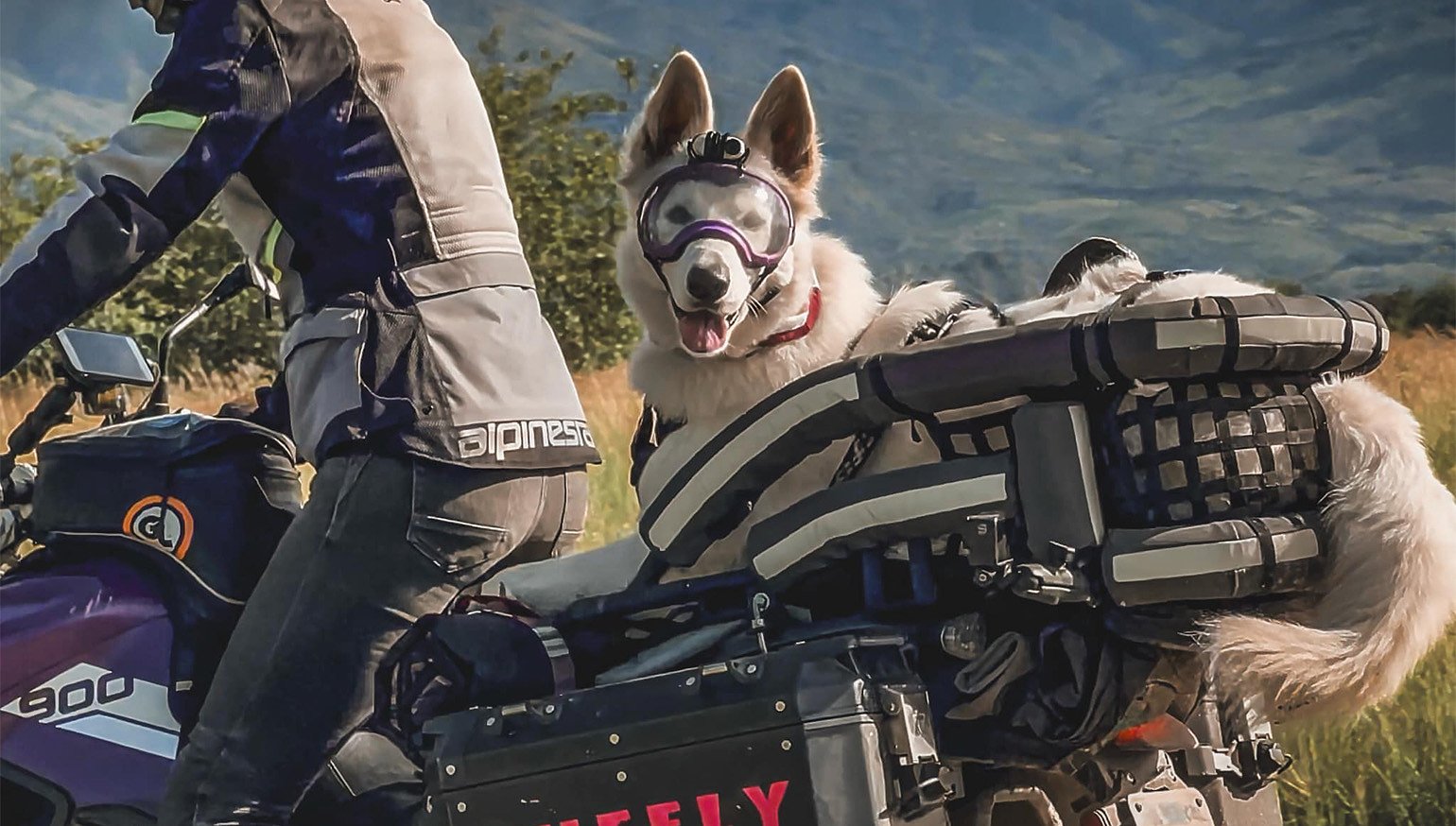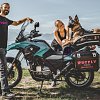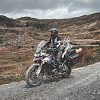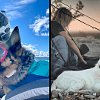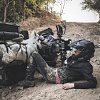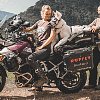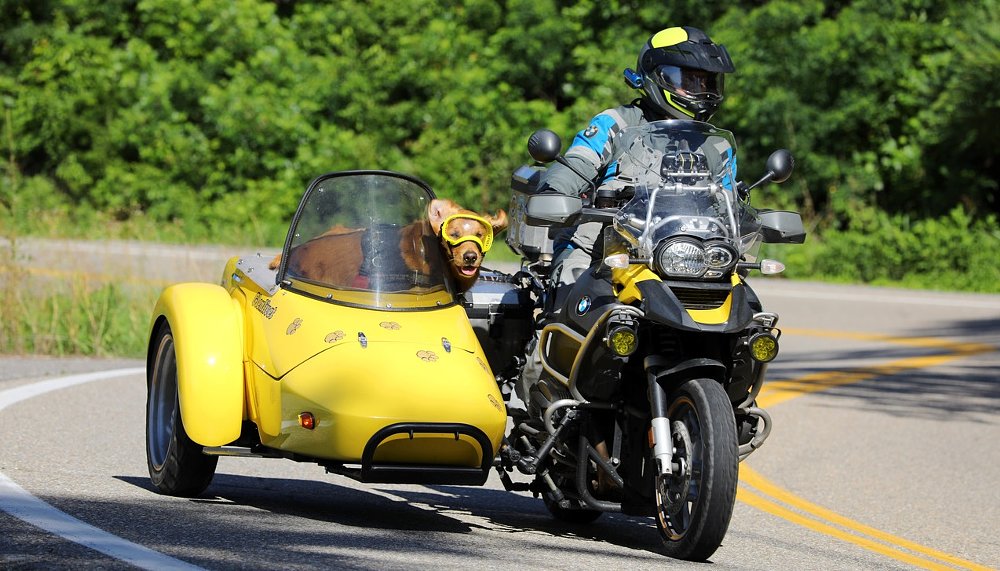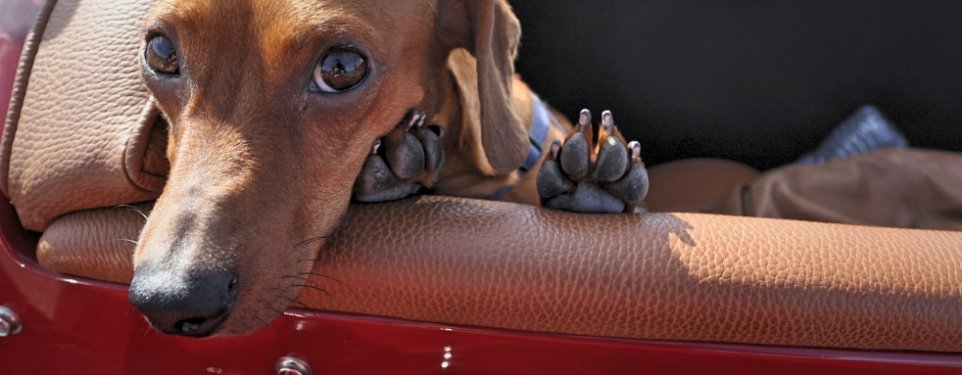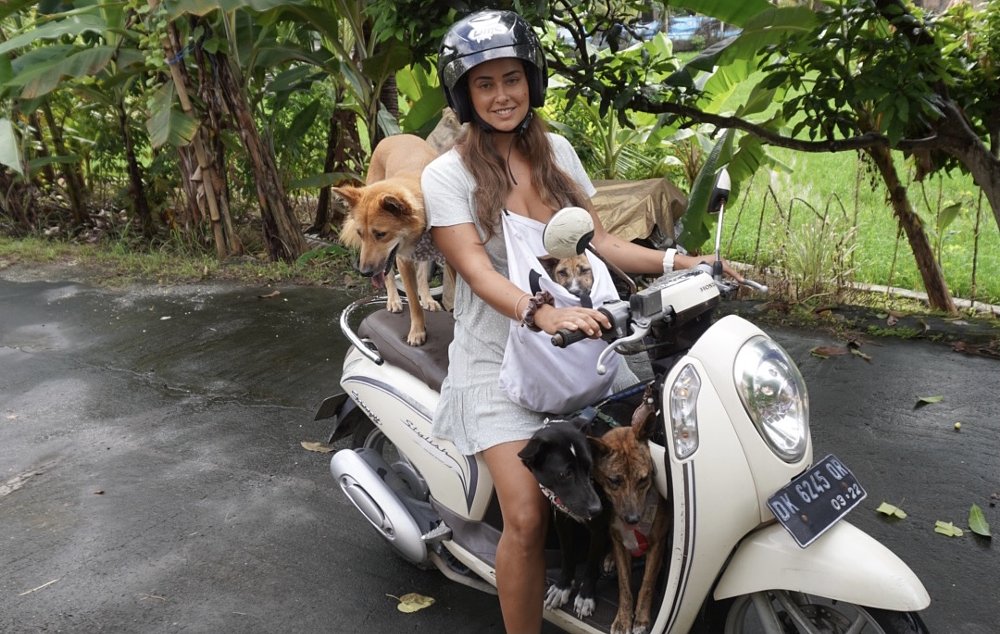When Jess and Greg Stone put down roots in Guatemala in 2017, they did what any right-minded couple would do — they got a dog. A German Shepard named Moxie, to be specific. There was just one catch. When Jess and Greg embarked on two-wheeled adventures, they had to leave Moxie behind. That’s when the Stones came up with the K9 Moto Cockpit, a platform-style carrier for larger dogs.
It was an instant hit. Particularly, with other dog-owning motorcyclists. Soon, requests started flooding in. To spread the word to even more riders, the couple started GoRUFFLY Around the World, a web series documenting the couple’s far-flung travels, in 2022.
The series sent Jess and Greg to the Arctic Circle and back, but misfortune was hot on their heels. First, a crash left Greg with a broken hand and wrist. Then, tragedy struck. Following a knee surgery, Moxie had an adverse reaction to her medication and suddenly passed away. Jess and Greg were heartbroken. But, they were not deterred.

After taking some time to fully process the loss and complete Greg’s rehab, it was time for the Stones to “bring another pup into the pack.” Enter Whimsy, a White Swiss Shepherd. In 2024, Jess, Greg, and Whimsy set off for South America. To learn the secrets behind their dog-friendly travels, I caught up with Jess Stone while the trio ventured through Chile. This is what she had to say.
Common Tread: Traveling with a dog requires additional supplies. How do you fit Whimsy’s food, water, treats, and bed into your existing pack?
Jess Stone: So, for Whimsy, for her food, I have tank pannier bags on the front, which are six liters each. On one side, the high side, I have her kibble bag, where I can fit basically three to four days’ worth of kibble. She also has a collapsible bowl that goes with it.
On the low side is where I carry her liter bottle of water, which I use for me, too. I also carry her leash there, her water bowl, and her tether. On the underside of my K9 Cockpit, I have a tail bag — which fits between the Cockpit and the brake light — and in there, I carry her toy.

The other things that I carry for Whimsy is weather protection. I carry her rainfly just below the Cockpit on top of the passenger hand rest. It's a cover that goes over the Cockpit. That's what we use when we're in the rain or if it's cold out. I also have her sun shield, and that goes over the Cockpit and reflects the sun. That gives her some shade when we're in really hot weather.
I have Whimsy’s bedroll that we take absolutely everywhere. It attaches to the front of the Cockpit and gives me, as the rider, a little bit of back support. I carry everything that Whimsy needs. The only thing I don't carry is the camping gear. That's what Greg carries on his bike.
We do have loads of [customers] all around the world who are doing solo trips with their dogs. They have to carry everything that they need for themselves and their dog. So, one of the accessories that we have is luggage loops. That allows you to attach your tent, your sleeping bag, your camping chairs, all along the outside [of the Cockpit].
CT: What should riders consider when traveling with a full-grown dog (like Moxie) versus a puppy (like Whimsy)?
JS: Whimsy's almost two years old now, so she's really dialed in. When it comes to how long she can ride, she can outlast me. She just needs a break maybe every couple of hours.
Now, Whimsy as a puppy, was a bit of a different story. She was a bit of a terror at four months old. She still had a lot of training to do. It changed the way that we had previously been riding with Moxie. With Whimsy, we needed more breaks. We couldn't go as long as we used to. So, it took us a little bit of an adjustment period.
The other thing was she just didn't have boundaries at the campsite. We pulled over to one of our first campsites, and she just wanted to get on top of everything. We were trying to put up the tent and she was stamping all over it. That's why I'm carrying her tether. That helped a lot.

CT: Greg and you often venture off-road. How does the Cockpit secure and protect Whimsy when the terrain gets tough and during a tip-over?
JS: The Cockpit secures on my [bike] pretty simply. There's four bolts that go down to the chassis. It also has stabilization brackets that go to the passenger handrails. That is a very secure mount. We always recommend to [our customers] that they harness their dog in. On the Moto Cockpit, we have welded anchors, so they’re harnessed in the front and in the back. If you have them harnessed in nicely and securely within the padded walls of their Cockpit, they're going to stay as safe as possible.
When it comes to a tip-over, if you were to have a human passenger, they would likely bail. They're wearing all of their riding gear. With a dog, it's a bit of a different situation. If you tip over on your bike, you want the dog to stay within the padded walls of a Cockpit. That's why we built the Cockpit to be as safe as possible.
I've had all sorts of tip-overs with Moxie and Whimsy. When you have one of these types of tip-overs, the dog doesn't really understand what happens. They just get really excited. They're like, ooh, something new has happened. The one thing that we always tell [customers] is after they have a tip-over, take your time. Don't rush to get your bike right back up. Your dog is going to be suspended in their Cockpit. So, you're going to want to remove the tethers and let your dog down.

CT: Are there any lessons you've learned while traveling with Moxie — and later, with Whimsy — that you didn't know before setting out on your adventure?
JS: The first one is about the fact that the dog is always very in tune with your emotions. When I'm riding on the dirt, if I start to get anxious, which I often do, Moxie, and now Whimsy too, start to feel that. Then that starts to get them feeling anxious and they start to fidget. When they start fussing on the back, then I know that I really need to focus on how I'm feeling. And sometimes that means pulling over and taking a few deep breaths and just taking the tempo down.
Another lesson is patience. When you ride with a dog on the back, you are going to get a lot of attention. You're going to get it from cars that are passing by right beside you. You also get a lot of people who when you're at a stoplight or a stop sign, also want to come out and start talking to you. But when it happens the most is when you're stopped for a prolonged period of time at either a gas station or a parking lot. You just need to make sure that you have some patience for that because it's going to happen whenever you stop.
The last lesson is that people really want to help you. You're a bit of a spectacle, so they're ready to help you if you need anything. People are really friendly, and we've been asked numerous times to go out for a drink or to hang out. We've only had really good experiences. Having the dog just adds something extra that captures people's attention and they want to help.

More memories
I'd venture to say that more lessons probably await Jess and Greg in the miles ahead. But, there are also more memories to be made, too. Memories they can share with Whimsy thanks to the K9 Cockpit.




